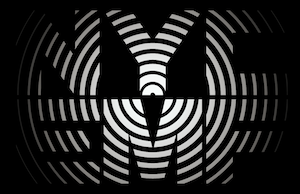The Festival has started! In addition to our daily music programs, we also have interactive installations, live papers, and live workshops throughout the week! Please refer to our updated program booklet for all of the latest information at https://nycemf.org.
To participate in our remote paper and workshop sessions please sign up via below links and thank you for those that have already signed up!
For papers sign up here.
For workshops sign up here.
Once you have signed up we will send you a session zoom link to the email you provided.
For fixed media concerts, please see the Program Book and play pieces from the hyperlinks in the book.
Papers scheduled for today include:
11 AM
Gil Dori
Arcos: Generating Real-Time Graphic Notation from Gesture Data
One approach to digital real-time scores focuses on representation of performance actions. Such notation should also facilitate sight-reading, and provide the performers with easily available information for interpretation on the spot. The paper describes the concepts and compositional process of my recent real-time graphic score work Arcos, for cello and augmented violin bow. The work’s graphic notation is generated directly from gesture data of various bowing techniques. A Myo armband was used to record cello bowing data, and the augmented bow’s own position tracking module was used to record its motion data. After processing the data, gestures were visualized on the screen, as a form of real-time graphic notation based on imitation. This notational approach–a low-level symbolic representation of gestures–allows for an immediate, intuitive interpretation on the spot, and provides an instantaneous connection between notation and action. My work also offers a distinct perspective on notation for electronic instruments in the context of real-time action-based scores. Finally, the paper discusses the premier of Arcos, reflecting on the system design as well as on the experience of rehearsing and performing this piece.
11:30 AM
Nicola L. Hein
Improvising with Listening Machines — Towards a Concept of Cybernetic Listening
The focus of this paper is on the artistic practice of human -machine improvisation, the collaborative improvisation of human and machine musicians. Can the artistic practice propose modes of listening that are different from and challenge modes of listening propagated by the Euro- American tradition of thought (Suchman 2006, 228) and its art music? We propose that the artistic practice of human-machine improvisation develops and offers modes of listening, which qualitatively differ from anthropocentric models of listening. These we want to call cybernetic listening. The
artistic practice of human-machine improvisation challenges persisting anthropocentric models of agency and involves “a kind of doubling or mimicry in the machine that works as a powerful disclosing agent for assumptions about the human” (Suchman 2006, 226) and about music, we might add. In practicing cybernetic listening, interactive music systems challenge the dichotomy of human/non-human, as composer and scholar George Lewis reminds us of (Lewis 2018, 128). Cybernetic listening is concerned with the systemic qualities of the interactions, understanding interacting machines and humans as “structurally coupled but operationally closed” (Borgo 2016). We can see the interaction of structurally coupled human and machine modes of listening, which form a listening system. Finally we argue that the focus of cybernetic listening is the listening system and that the artistic practices of human-machine improvisation deploy cybernetic modes of listening that work as a listening feedback processes.
